Matador Network's Blog, page 1181
January 16, 2019
Kilauea eruption creates new beach
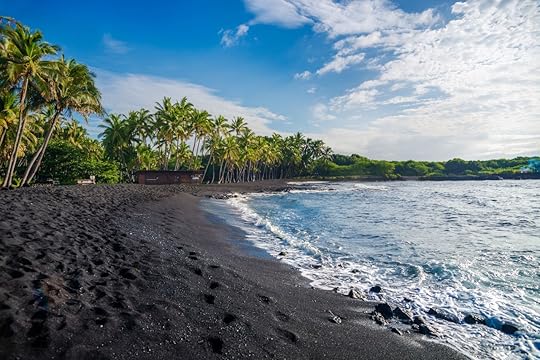
The eruption of Hawaii’s Kilauea volcano last May caused devastation across the Big Island, but it did have some pretty cool side effects on the geography. Not only did the eruption create miles of land, but it also formed a new black-sand beach on the east side of the island at Pohoiki, also known as Isaac Hale Beach Park.
View this post on InstagramA post shared by Hawaiian Sanctuary (@hawaiiansanctuary) on Jan 7, 2019 at 10:02am PST
Ross Birch, executive director of the Island of Hawaii Visitors Bureau, told Lonely Planet, “The new black-sand beach at Isaac Hale Beach Park is a silver lining from the Kilauea eruption last year. We anticipate our community and visitors will embrace this special place and make new memories with loved ones. The new beach will also serve as a reminder to the island of Hawaii’s unique ability to be ever-changing.”
Also created by the lava flow at Isaac Hale Beach Park were four natural ocean thermal ponds, though those ponds aren’t safe for swimming, as they have not yet been disinfected. Visitors are also cautioned against swimming on the beach, due to strong currents and a dangerous shore break. 
H/T: Lonely Planet

More like this: The 11 strangest-looking beaches around the world
The post The Kilauea eruption in Hawaii created a stunning new black-sand beach appeared first on Matador Network.

TSA agents blasting rap music

The longest government shutdown in US history is nearing the end of its first month, and everyone is going a little crazy. Not least of whom are the TSA agents who aren’t getting paid but are still expected to show up to work. If you think going through TSA is frustrating, try being a TSA agent working in an understaffed environment, not knowing when you’ll be getting your next paycheck. Understandably, they’re doing whatever they can to forget their woes and make the workday more bearable. For many, that means blasting rap music.
In recent weeks, passengers at JFK airport have reported hearing explicit, uncensored rap songs over the loudspeakers while in security lines. Among the songs heard include Travis Scott and Drake’s “Sicko Mode,” Kanye West’s “Lift Yourself,” and tracks from the Beastie Boys and Ludacris. While some passengers might enjoy the music, it certainly seems out of place in the serious environment of a TSA security line.
Many passengers have reacted to the reports, and to hearing the music themselves, via Twitter. For the most part, they unanimously agree that it’s a pretty weird phenomenon, even comparing it to something out of the Twilight Zone.
JFK is playing sicko mode we’re living in a simulation
— cesar millan (the dog whisperer) (@postmetaboi) January 7, 2019
TSA has officially stopped giving a fuck. SICKO MODE (dirty version) is playing on the speakers at JFK lmfaooo
— lsdipalma (@LSDiPalma) January 9, 2019
I was in JFK at 6:30am the other day and they were playing that poopty scoop Kanye song and I felt like I was in the twilight zone
— Tracee Ellis Ross Jr (@virghoe_) January 9, 2019
If the shutdown continues, it will be interesting to see how the TSA’s music selection evolves and what other methods they may use to express their frustration. In the meantime, here’s what you may be hearing the next time you’re waiting in line for that conveyer belt. 
H/T: COS

More like this: Every way the government shutdown is affecting travel
The post Fed up with the shutdown, TSA agents are blasting explicit rap music in airports appeared first on Matador Network.

Love is in the bin exhibit

If you thought you heard everything there was to be said about Banksy’s infamous “Girl with Balloon” picture, which was spontaneously shredded in the midst of its auction in London last October, think again. With the three-quarters of the work shredded and dangling out of the frame, the piece is now entitled “Love is in the Bin”, and is garnering more attention than ever before. Next month, it will be exhibited for the first time at Museum Frieder Burda in Baden-Baden, Germany.
View this post on InstagramA post shared by MUSEUM FRIEDER BURDA (@friederburda) on Jan 9, 2019 at 3:25am PST
While the shredding was controversial, the buyer agreed to proceed with the $1.34 million purchase since it was Banksy himself who purposely damaged the piece. The stunt actually increased the painting’s value and aura of fascination, and made it the first-ever artwork to be created during a live auction.
The painting will be on loan to the museum for a one-month exhibition, which is expected to draw significant crowds. Henning Schaper, the museum’s director, said, “We have to resist the temptation to display the picture like a trophy. That would definitely not be what the artist had in mind. Instead, we are trying to adhere to his approach of consistently democratising art and we are currently discussing how to make the picture accessible to as many people as possible.”
“Love is in the Bin” will be on display from February 5 to March 3, 2019. Admission to see the piece will be free to align with the artist’s philosophy on the value of art. 
H/T: Lonely Planet

More like this: Kiev is an amazing hub for street art — and these are the best murals in the city
The post Banksy’s shredded painting will soon be exhibited in Germany appeared first on Matador Network.

Norwegian Air plane in Iran
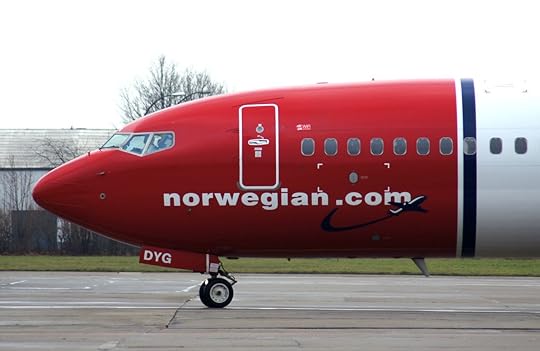
On December 14, a technical error forced a Norwegian Air jet to make an emergency landing in Tehran, Iran, and over a month later it’s still sitting there. The flight had left Dubai en route to Oslo when it began experiencing a technical error in one of the engines, forcing it to land safely in Tehran’s Shiraz Airport, with 186 passengers and six crew members. Luckily, the passengers and crew were able to leave on a flight to Oslo the next day, but for the aircraft, however, it wasn’t so simple. Due to the US sanctions on Iran’s nuclear program, prohibiting sale of services for civilian aircrafts, getting parts for the plane is taking an awfully long time.
Norwegian Air has never dealt with Iran’s ground regulations, and the incident shows the severity of sanctions against Iran’s civilian aviation. Anahita Thoms, a lawyer specializing in trade issues, told The New York Times, “There is no getting around the US sanctions. Let’s assume they need a spare part and that spare part contains more 10 percent US-origin goods, or technology — that would require a US license.” And getting that license is no easy feat, especially under the Trump administration. The incident is a striking example of how US sanctions against Iran can actually make flying less safe.
The current sanctions prevent Iran from renewing or repairing properly its aging fleet of aircrafts. Andrew Charlton, managing director of the consulting firm Aviation Advocacy explained to The New York Times that airplanes in Iran are like cars in Cuba. “Their options are to repair every part they have, to come up with their own parts,” he said. “They’ve had to become self-reliant.”
Right now, Norwegian officials have no idea when the plane will finally be able to depart Iran. 
H/T: The New York Times

More like this: Here’s the Iran you don’t see in the news
The post A Norwegian Air 737 made an emergency landing in Iran last month and is unable to leave appeared first on Matador Network.

January 15, 2019
Best things about Indianapolis
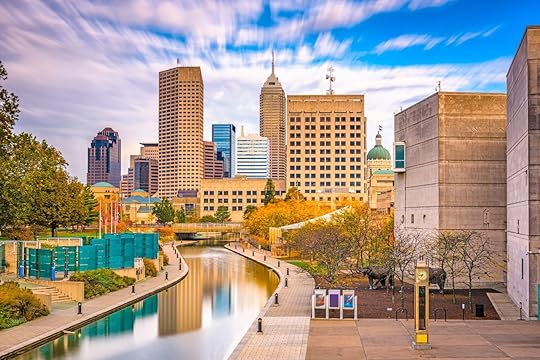
In a sea of cornfields and conservatism, Indiana’s bustling capital of Indianapolis is an island. From the independent art galleries on Mass Ave. to the vintage boutiques in Fountain Square, Indy has steadily been making a name for itself one of the Midwest’s preeminent cultural hubs. Sure, it’s no Chicago — but that’s a good thing if you hate crowds. For now, it’s one of the best-kept secrets south of the Great Lakes.
But no one is quite sure how much longer the city can fly under the radar. Museums, restaurants, and waterside promenades make it an ideal place to both visit and live. Hipsters are drawn to the craft beer scene and well-maintained bike paths. Before popularity forces Indy to relinquish its “underrated” status, brave the seemingly endless fields of corn — interrupted only by the occasional pro-life billboard — and visit Indianapolis. There’s a pork tenderloin sandwich waiting for you.
You can actually afford to be a foodie in this city.

Photo: La Mulita/Facebook
If you’re looking to eat well without breaking the bank, look no further than the up-and-coming food scene in Indianapolis. This tasty place-to-be has only gotten better in recent years. Start your day the Circle City way with brunch at either Cafe Patachou or Milktooth. Later on, spend happy hour at La Mulita where the only thing better than the cocktails are the fish tacos topped with pickled onions. For something more sophisticated — think ballin’ on a budget — don’t miss Tinker Street located downtown. The classic pork tenderloin sandwich still holds its own, too. Try one while you’re here.
Craft beer lovers will think they’ve died and gone to heaven.

Photo: Brent Hofacker/Shutterstock
Whether you’re a fan of a fruit saison or a hoppy IPA, the Indianapolis craft beer scene has something for every budding beer sommelier — or cicerone, as they prefer to be called. The city is home to approximately 50 craft brewers. You heard right: 50. Since your liver might object to you sampling them all in a single trip, it’s a good idea to prioritize your brew tour. Grab your first pint at the largest Indianapolis brewery, Sun King.
For round two, head to the Broad Ripple neighborhood, where Twenty Below Brewing runs Twenty Tap. In addition to offering its own brews, this homey joint has 40 taps for guest beers and quite possibly the best beer-battered cheese curds in the Midwest. Not far from Twenty Tap, you can check out the state’s very first brewpub, Broad Ripple. If you visit Indy in the summer, head downtown to Rathskeller. This Biergarten has live music every weekend.
You can bring the kids.

Photo: f11photo/Shutterstock
While cocktail bars and brewpubs aren’t particularly kid-friendly activities, Indianapolis has plenty to offer young visitors. For starters, the Children’s Museum of Indianapolis is the largest children’s museum in the world. Each year more than one million visitors traverse its five floors of exhibit halls, and your rugrats will go particularly nuts for the Dinosphere. The interactive exhibits are sure to delight and educate children and parents alike.
If you’re in need of some fresh air after a day at the museum, check out the Indianapolis Zoo, which is one of the largest privately funded institutions of its kind in the US. Or plan a hike at Eagle Creek Park, one of the largest municipal parks in the US. There you can also fish, canoe, and swim on its 3,900 acres.
You can watch hot air balloons and bring your deep-fried fantasies to life.
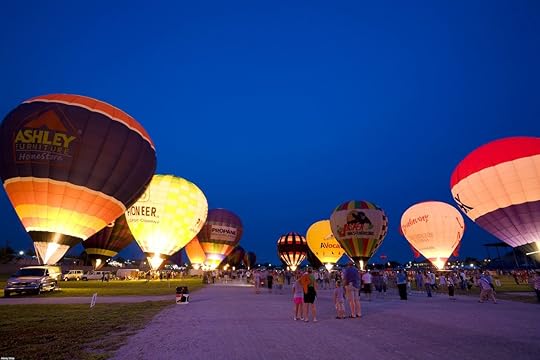
Photo: Alexey Stiop/Shutterstock
Wondering when the best time to visit Naptown is? The Indiana State Fair makes a strong case for August. With just a few exceptions, Indianapolis has hosted the annual state fair each year since 1852. Some people might say the Midway, a collection of amusement rides, is the main attraction. Others will tell you the musical performances are the big draw. Everyone is entitled to their own opinion.
But there is one general consensus that is commonly agreed upon: The fair food is the best food of all time. Deep fried Oreos. Deep fried sugar cream pie. Deep fried chicken and waffle sandwich. The menu isn’t going to win you any points with your doctor, but hey, you can diet when you’re dead.
Or soak up literary greatness at the Kurt Vonnegut Museum.

Photo: Kurt Vonnegut Museum and Library/Facebook
Throw it back to your high school English class with a trip to the Kurt Vonnegut Memorial Library, even if Slaughterhouse-Five was the only book you actually read. One of the most famous writers of the 20th century, Vonnegut was an Indianapolis native and acknowledged the influence Indy had on his work.
“If I ever severed myself from Indianapolis, I would be out of business,” he said. “What people like about me is Indianapolis.” Even though Vonnegut died in 2007, the museum/library/reading room keeps his memory alive. You can see the Purple Heart medal he earned during World War II, along with a rotating collection of rejection letters he received during his literary career — serving as a reminder that even that greats fail from time to time.
The city lives and breathes for sports.

Photo: Indiana Basketball/Facebook
It’s hard to even say you visited Indiana if you don’t catch a basketball game. James Naismith, the inventor of basketball, said that despite basketball having been invented in Massachusetts, Indiana is the true center of the sport. The passion is real, folks. In fact, it’s hysteria… Hoosier Hysteria.
Visit Hinkle Fieldhouse and step inside one of the greatest sports films of all time. The historic home of the Butler Bulldogs doubled as the setting of the state championship game in Hoosiers. Hoops not really your thing? Indianapolis also has an NFL team, the Colts. But, without a doubt, the biggest sporting event of the year is the Indianapolis 500. Snag tickets to the Memorial Day Weekend race at the Brickyard, and see if you’ve got what it takes to hang in the legendary Snake Pit. 

More like this: South Dakota is the most underrated state in America. Here’s why.
The post Indianapolis is the new cultural hotspot of the Midwest appeared first on Matador Network.

Changes to Eurail in 2019
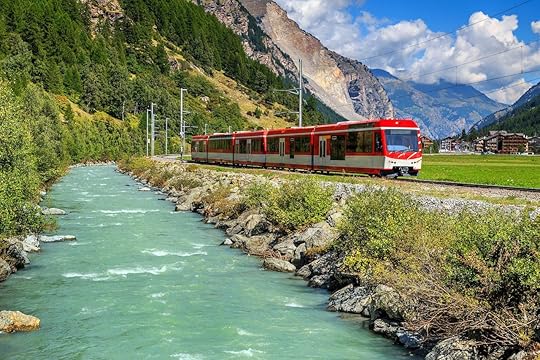
Long before WOW and Norwegian Air had $99 airfares luring young people across the pond, there was Eurail, the post-World-War-II, trans-European train network that offered dirt cheap, all-you-can-ride passes for intrepid Americans looking to explore a region just recovering from the most destructive war in history.
What resulted was the first iteration of the Euro-trip, a rite-of-passage trip for young adults in the summers between college spent riding the rails in a place that, at the time, cost a fraction of what things did at home. If you wanna learn what it was like, ask a Baby Boomer.
Nowadays, Europe is significantly more expensive (though there are still a few last vestiges of affordable travel if you know where to look). The increase in cost for accommodations, food, and activities mean that cheap transportation is more important than ever. Eurail is celebrating its 60th anniversary this year, which will not only make whatever Baby Boomer you talk to feel extremely old, but it’ll also save you a bunch of money on your Europe trip. In honor of the occasion, Eurail is launching all kinds of new routes, destinations, and passes — and cutting prices on a bunch of existing stuff.
So whether you’re thinking about spending a month checking a dozen countries off your list, touring the Greek Isles, or working England into your itinerary, you’ve got a bunch of new ways to do it by train. Here’s a quick rundown:

Photo: Ekaterina Pokrovsky/Shutterstock
1. New countries added to Eurail Global Pass
Macedonia and Lithuania are now included in Eurail’s Global Pass, which gets you access to the now-31 countries within the Eurail network.
2. Travel within Great Britain now available via Eurail
Where previously the only Eurail options in the UK were traveling from London to Amsterdam, Brussels, and Paris, now Eurail Global Pass holders can travel via Eurostar all over Great Britain, as well as from London to Rotterdam, Avignon, Lille, Lyon, and Marseille.
3. New 2nd Class option on Global Passes
Following the airlines’ lead of offering cheaper products with stripped-down services, Eurail is now offering its own version of Basic Economy with a 2nd Class pass. While the difference between first and second class varies, it usually means the upgraded seat will offer stuff like WiFi, electrical outlets, bigger seats, and menus served at your seat. Sometimes with food included. The cost difference can be up to 35 percent, opening up cheaper passes for as little as $257.
4. Global Pass prices drop up to 37 percent
The all-you-can-ride, multi-country pass is getting a serious discount, dropping over a third on some of the upper-tier passes. In addition, One Country Passes will be cheaper in 2019 too.
5. Say goodbye to Multi-Country Passes
The reason Eurail is being so generous with its Global and One Country pass prices is that its old Multi-Country Pass, which allowed you to travel through two-to-four countries, is no more. So though people looking for rail travel between a couple of countries won’t have near the flexibility they used to, buying individual countries or the whole continent will be cheaper. Whether this is a benefit or a hindrance depends on your destinations, but plan accordingly.
6. Five new carriers added
Eurail is not a train line in and of itself but rather a pass one can use on a number of rail lines throughout Europe. This year it’s added Rail Delivery Group, Lithuanian Railways, Leo Express, RegioJet, and Macedonian Railways, opening up service to dozens of new routes.
7. New Greek Islands Pass added
Eurail isn’t just for trains anymore! This year Eurail gets into the over-water transport game, including the Superfast and Blue Star ferry lines in its new Greek Islands Pass. It’s not quite as all-inclusive as the rail passes, only offering five-and-six trip packages running from $107-$207 per month. The upgraded sic-trip pass also gets you two trips between Italy and Greece, and transfers to Piraeus.
8. New Senior discounts
Perhaps to honor the young people who made Eurail such a success in the ‘60s and ‘70s, a new Senior passenger category has been added in which folks over 60 get 10 percent off all fares.
9. Lower fares for people 27 or younger
And to help their cash-strapped millennial children, Eurail has dropped Global Pass fares for “Youth,” classified as anyone 27 or younger, by up to 23 percent.
What does all of this mean for you? Well, it means if you’re using cheap airfares to explore the whole continent, the process just got a lot more streamlined. You’ll also have more-affordable options than you might have a year ago. It’s still not the bargain basement Europe the Baby Boomers explored, but at least getting around won’t make you choose between rent and travel. 

More like this: The 7 most glamorous sleeper trains in Europe
The post Everything new coming to Eurail in 2019 appeared first on Matador Network.

Carbon-neutral Costa Rica by 2021

Costa Rica is showing the world what a committed climate policy actually looks like. The country wants to be the first to go completely single-use plastic– and carbon-free, hoping to reach that goal as early as 2021. And so far, it’s doing pretty well. It’s already started by banning all single-use plastics in 2017 and has launched a national campaign to replace these plastics for biodegradable or water-soluble alternatives, or products made of renewable materials.
Strides toward carbon neutrality were taken last May when Carlos Alvarado, the country’s president, pledged to phase out fossil fuels. Costa Rica already gets almost all of its electricity from renewable sources (80 percent comes from hydroelectric power), and to decarbonize faster, the country incentivizes cleaner vehicles, lifting taxes on electric cars.
In his May inauguration speech, president Alvarado emphasized Costa Rica’s dedication to sustainability, saying, “Decarbonization is the great task of our generation and Costa Rica must be one of the first countries in the world to accomplish it, if not the first. We have the titanic and beautiful task of abolishing the use of fossil fuels in our economy to make way for the use of clean and renewable energies.”
Costa Rica wouldn’t be the very first country to accomplish this; Bhutan is actually carbon-negative, according to National Geographic.
Costa Rica might still have a ways to go before accomplishing its ambitious goal, but it’s certainly off to a great start. 
H/T: Culture Trip

More like this: The 7 cities making the biggest strides toward sustainability this year
The post Costa Rica may become one of the first carbon-neutral nations in the world by 2021 appeared first on Matador Network.

Countries with sweet breakfasts

When it comes to breakfast, only one question really matters: sweet or savory? For those of us with an early morning sweet tooth that needs to be satiated, the answer is easy. The good news is that there are early morning sweets lovers around the world, meaning there are worldly takes on AM sugar fixes wherever you go. Of course, pigeon-holing an entire country on one breakfast is impossible, and the below often have savory breakfasts as well. The world is a mix of sweet and savory lovers, after all.
But if you’re sweet through and through, these are the places you’ll want to keep on your radar.
1. Austria: kaiserschmarrn

Photo: A_Lein/Shutterstock
Kaiserschmarrn translates to “emperor’s mess,” and it’s as sweet a mess as can happen. The meal is essentially a loaded pancake that’s torn into small pieces. Common toppings include nuts, raisins, apples, and powdered sugar with a sweet jam or sauce for dipping on the side. Austria’s Kaiser Franz Joseph I was supposedly a fan, and the dish spread around the former Austrian empire in the mid-1800s, so you’ll also find versions in countries like Hungary, Slovenia, and Croatia. A testament to kaiserschmarrn’s sweetness: It’s eaten for dessert as well as breakfast.
2. France: bostock

Photo: enchanted_fairy/Shutterstock
French toast is great and all, but the French don’t even call it that, and the country has a far superior sweet bread breakfast. Bostock is believed to come from Normandy in the north of France and is made with brioche bread that’s sweetened with syrup and topped with an almond-based sweet cream called frangipane and a layer of sliced almonds. (For the record, French toast is pain perdu in France, which means “lost bread,” and it’s made with stale bread.)
3. Netherlands: hagelslag

Photo: Iryna Melnyk/Shutterstock
Toast can be sweet and interesting if you do it the Dutch way with sprinkles. Hagelslag means “hailstorm,” and let the hailstorm of chocolate, rainbow, and anise-flavored sprinkles rain down on your buttered toast. Of all the ways people top toast around the world, the Netherlands surely does it the sweetest.
4. Poland: pączki

Photo: MarinaP/Shutterstock
It’s easy to think of Homer Simpson or Americans in general when you think of doughnut lovers, but Poland has its own sweet twist. Pączki are like filled doughnuts that are flattened. They still retain some fluffiness, though, thanks to being commonly made with liquor to keep the oil that it’s fried in from completely taking over. The top is covered with sugar or a glaze, and the inside is any type of fruit jam, cream, or seasonal fruit.
5. Kenya: mandazi

Photo: AS Food studio/Shutterstock
Mandazi (or mahamri when coconut is added) is a common breakfast and snack in Kenya and other parts of the Swahili coast. It’s similar to a doughnut but traditionally lacks a glaze and is less overbearingly sweet. It’s made with a yeasty dough that’s either circular or a triangle and is kneaded with cardamom, coconut, and sugar. Sweet tooths can top it with powdered sugar and shaved coconut.
6. Italy: cornetto

Photo: sergioboccardo/Shutterstock
Breakfasts in Italy are generally light. One common morning meal you’ll find is the cornetto, which is a lot like a croissant but is filled with sweetened fruit jam or chocolate. It’s always accompanied by some coffee (preferably cappuccino or espresso) to balance out the sweetness.
7. Denmark: wienerbrød

Photo: Barbro Bergfeldt/Shutterstock
The general “Danish pastry” moniker doesn’t do justice to the pastries made by the people of Denmark. Wienerbrød originally comes from Vienna, Austria — the name means “Viennese bread” — but has been folded into Danish society. It’s made with yeasty dough, sugar, eggs, and plenty of butter that’s all rolled into thin layers. It’s flaky in all the best ways and often has a sweet filling in the middle. 

More like this: The favorite breakfast dishes of 50 countries around the world
The post The 7 countries with the best sweet breakfasts appeared first on Matador Network.

Airbnb contest to live in Italy
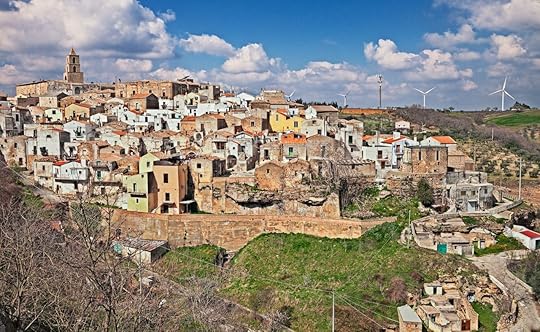
Sure, you might have considered renting an Airbnb in Italy for a few weeks as a much-needed getaway, but now Airbnb might actually pay you to live there like a local in Southern Italy for a whole three months. Partnering with Wonder Grottole, Airbnb is offering four lucky winners the chance to reside for three months in Grottole, a small mountain village known for its homemade pottery baked in grottos scattered throughout the hills. With only 300 residents and over 600 empty homes, this ancient village is now in danger of becoming a ghost town, prompting creative revitalization efforts like this one.
The four winners will move to Grottole this summer and become immersed in the daily life of this traditional Italian community. This includes living in centuries-old homes; learning various skills from residents, including vegetable farming, honey harvesting, olive oil production, and pasta making; and acting as hosts for incoming visitors. Proceeds generated from these experiences will be reinvested into the village to bolster its economy and further encourage tourism.
A Grottole resident named Vincenzo, who will be one of the local instructors in the art of olive oil, said, “Visitors coming to Grottole will live in a quiet place with slow living. There’s no traffic, no chaos, no pollution, good food, and above all, welcoming people.”
To apply, visit the official Italian Sabbatical website and fill out the form. Applications will be accepted until February 17. 
H/T: Insider

More like this: How to road trip around Italy for under $500
The post Airbnb will pay for you to live in this small Italian village for three months appeared first on Matador Network.

Peneda-Gerês is the only national park in Portugal. And it’s incredible.

Peneda-Gerês is the single greatest national park in Portugal. It wins on a technicality, being that it’s the country’s only national park. But there’s a certain magic to the mountains and valleys of northern Portugal where Peneda-Gerês lies, snuggled up against Spain, that makes calling it the greatest feel apt nonetheless.
Gerês, as it’s known locally, spans roughly 270 square miles of oak and pine forests, granite cliffs, peat bogs, marshes, rivers, and lagoons between the Castro Laboreiro and Mourela plateaus. Interspersed is evidence of the area’s long human history: ancient Roman relics, megalithic tombs, medieval ruins, and villages still inhabited to this day. Several of the larger villages have accomodation options and tabernas serving up steak dishes and smoked meats that’ll tempt you to stay the night.
The park is an easy enough day trip to arrange from Porto, and a cinch from the city of Braga. But there’s a lot to see, do, and eat. If you have the time, consider spending a weekend or longer to take in the highlights, from hiking trails to holy sanctuaries.
Head to the heart of Gerês for waterfalls and thermal baths.

Photo: struna/Shutterstock
Gerês is split between three districts. Viana do Castelo covers the northern half of the park, and the southern half is shared by Braga and Vila Real. Whether you perked up at the mention of “waterfalls” or “thermal baths” just then, make a beeline for the middle district, Braga. There, you’ll find two of the park’s most popular falls and an elegant, if well-worn, spa town.
Both of the Braga district’s waterfalls feature natural swimming pools and smooth sunbathing rocks. It’s a quick hike from the frozen-in-time Ermida village to the Cascata Tahiti waterfall and its bright emerald pool. Cascata do Arado, the taller cascade, sits closer to Vila do Gerês, where you can soak in thermal baths that have been frequented since the area’s Roman occupation. Book a spa day (or two) at the Águas Do Gerês hotel and spa in the village center. The hotel also organizes hiking, horseback riding, swimming, and other excursions for guests.
Walk, or cycle, the Roman road.
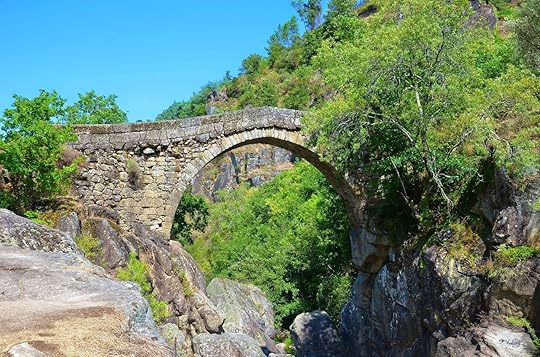
Photo: Petr Pohudka/Shutterstock
A Roman road known as the Geira cuts across the park. The route once connected the ancient cities of Bracara Augusta, now Braga, and Astúrica Augusta, now Astorga, in Spain. Much of the Geira has been preserved, including a stretch that extends from the Portela do Homem village (where there’s another popular waterfall) to the Campo de Gerês village. It’s a nice way to see the Mata da Albergaria oak forest, as well as ancient bridges, memorials, and mile markers bearing old epigraphs.
Stick around Campo de Gerês, also known as São João do Campo or simply Campo, when you arrive. Stay at least long enough to visit the Vilarinho das Furnas Ethnographic Museum and see artifacts from the park’s very own Atlantis, a village that was intentionally flooded in 1972 upon the completion of a nearby dam. As with much of the park, there are also pleasant shepherd-forged trails worth hiking around Campo.
Tour castle ruins, medieval monasteries, and cozy villages lacking modern comforts.
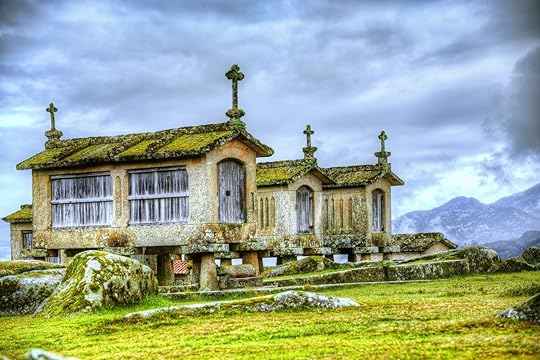
Photo: Rolf E. Staerk/Shutterstock
More than 100 granite villages are scattered around the park’s rivers and hills. Many are small, made up of modest stone structures with red roofs, and populated by villagers who pass their days farming and tending to livestock. Others are larger, with identifiable main squares and grand archaeological landmarks nearby.
A car will come in handy if you want to see everything. Start your tour up north in the Castro Laboreiro village, with its megalithic castle and bridges and Santa Maria da Visitação church. This is also a good place to fuel up on hearty local fare and fine Portuguese wine, with several options in town.
Heading south, hit the 18th-century Santuário de Nossa Senhora da Peneda pilgrimage site and overlooking Vale da Peneda viewpoint, then head to the Soajo and Lindoso villages. Here, you’ll see groups of granaries, or espigueiros, hoisted up on stilts. In Lindoso, they surround a 13th-century castle.
Continue on toward Vila do Gerês, outside of which is the São Bento da Porta Aberta church, and make your way to Pitões das Júnias. This quiet, albeit far from undiscovered, village is situated near the Santa Maria das Júnias monastery and yet another waterfall. It’s a solid option come meal time for regional fare like feijoada, or meat stew. And you can always arrange an overnight at the Casa do Preto hotel.
Wild ponies, Iberian wolves, and 147 avian species call Gerês home.
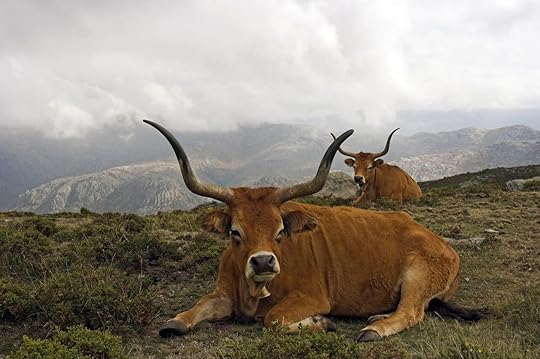
Photo: Zacarias Pereira da Mata/Shutterstock
At times, away from the more heavily trafficked areas, you’ll feel like the only person in the park. Maybe even the world. But you’re never truly alone in Gerês, a habitat for more than 200 vertebrate species and countless birds. The likelihood of encountering a wolf is slim given the radically diminished population, but your odds of seeing wild Garrano ponies are actually pretty good. You might also see gold-striped salamanders scampering underfoot, Spanish ibexes roaming, otters splashing, or eagles flying overhead. Birdwatching is hugely popular in the park, particularly on the Calcedónia Trail.
When to visit

Photo: Zacarias Pereira da Mata/Shutterstock
The best time to visit Gerês really depends on you. Predictably, your odds of visiting on a warm, sunny day increase dramatically over summer, as do the crowds. Winter ushers in snowfall and the least amount of foot traffic. In general, we recommend visiting during the shoulder seasons. You’re likely to see rain in both fall and spring, but you’ll also get mild temperatures, stunning foliage, and mostly unobstructed views. 

More like this: 7 pastries worth traveling to Portugal for
The post Peneda-Gerês is the only national park in Portugal. And it’s incredible. appeared first on Matador Network.

Matador Network's Blog
- Matador Network's profile
- 6 followers



